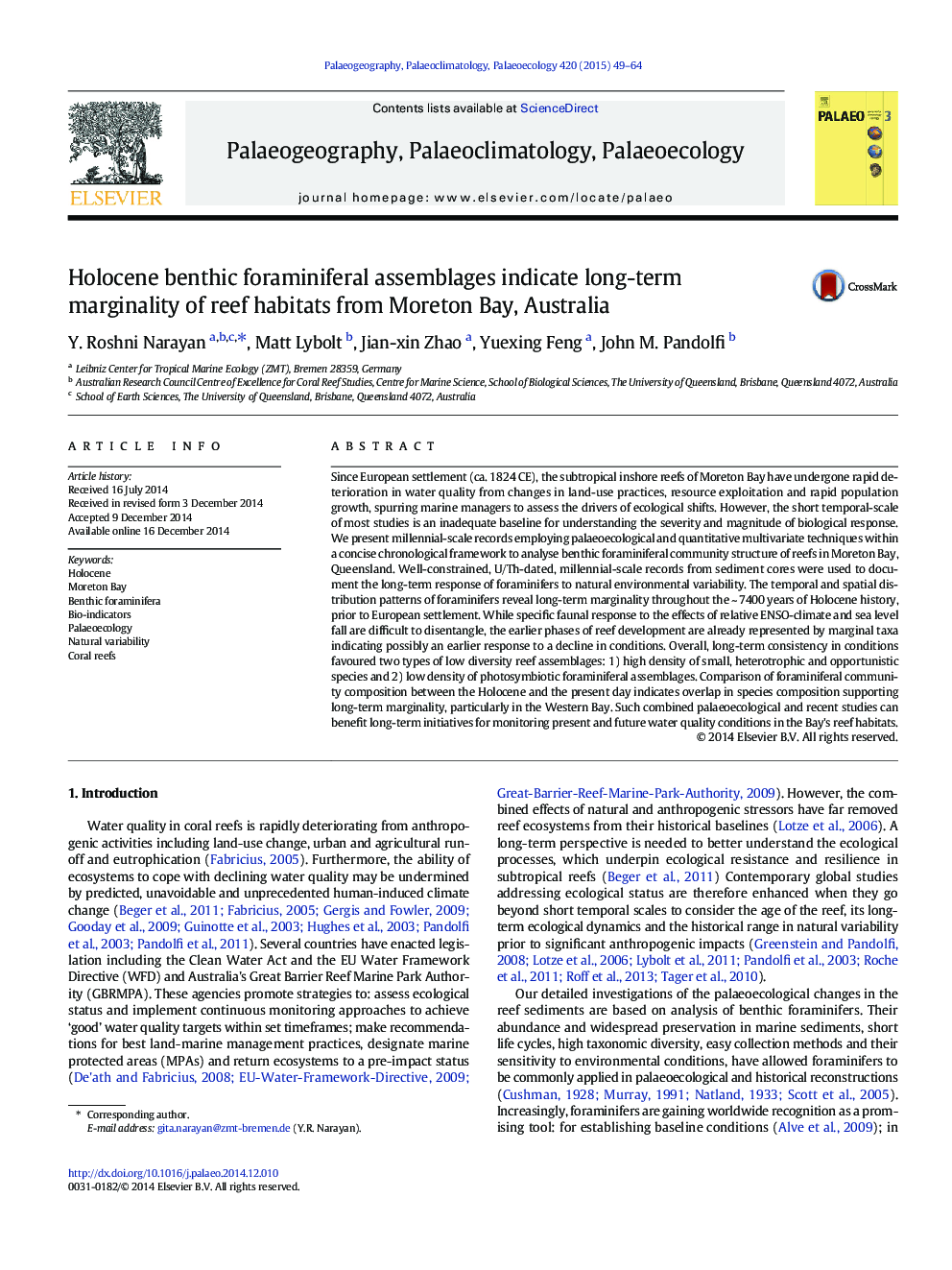| Article ID | Journal | Published Year | Pages | File Type |
|---|---|---|---|---|
| 4466056 | Palaeogeography, Palaeoclimatology, Palaeoecology | 2015 | 16 Pages |
•The first concise chronological framework for the Holocene reefs of Moreton Bay•Historical environmental conditions in Moreton Bay prior to European settlement•Foraminifera indicate long-term marginality throughout ~ 7400 year timeframe.•Moreton Bay's Holocene inshore reefs were dominated by low diversity assemblages.•Long-term resilience of ecological communities to marginality.
Since European settlement (ca. 1824 CE), the subtropical inshore reefs of Moreton Bay have undergone rapid deterioration in water quality from changes in land-use practices, resource exploitation and rapid population growth, spurring marine managers to assess the drivers of ecological shifts. However, the short temporal-scale of most studies is an inadequate baseline for understanding the severity and magnitude of biological response. We present millennial-scale records employing palaeoecological and quantitative multivariate techniques within a concise chronological framework to analyse benthic foraminiferal community structure of reefs in Moreton Bay, Queensland. Well-constrained, U/Th-dated, millennial-scale records from sediment cores were used to document the long-term response of foraminifers to natural environmental variability. The temporal and spatial distribution patterns of foraminifers reveal long-term marginality throughout the ~ 7400 years of Holocene history, prior to European settlement. While specific faunal response to the effects of relative ENSO-climate and sea level fall are difficult to disentangle, the earlier phases of reef development are already represented by marginal taxa indicating possibly an earlier response to a decline in conditions. Overall, long-term consistency in conditions favoured two types of low diversity reef assemblages: 1) high density of small, heterotrophic and opportunistic species and 2) low density of photosymbiotic foraminiferal assemblages. Comparison of foraminiferal community composition between the Holocene and the present day indicates overlap in species composition supporting long-term marginality, particularly in the Western Bay. Such combined palaeoecological and recent studies can benefit long-term initiatives for monitoring present and future water quality conditions in the Bay's reef habitats.
